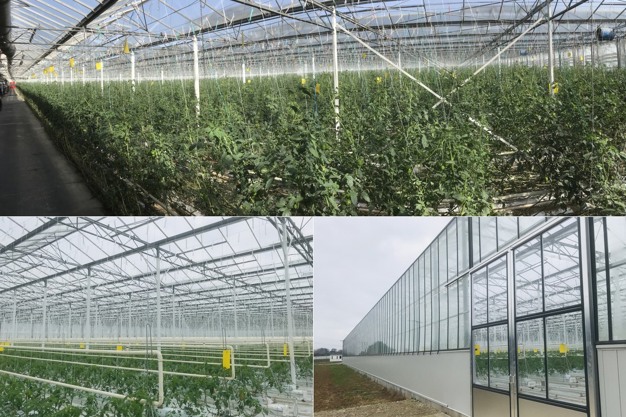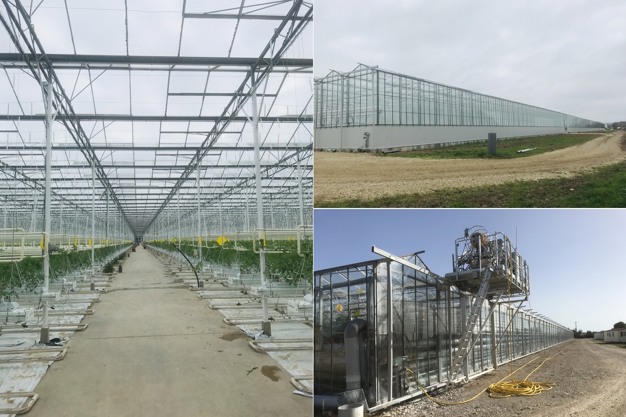Building a greenhouse takes several months, but raising the height of a greenhouse can be accomplished within a few weeks. This is what French tomato grower Eric Cescatti of Gie. Batanères, a member of the Rougeline group, experienced. Last winter, the column height of his 4-hectare greenhouse was increased from 3.5 meters to 5 meters. Jacco de Graaf explains how Dool France did the trick using a pneumatic jacking system to raise the facility in small increments - and how the nursery staff assisted in this process.
Eric Cescatti and Jacco de Graaf in the renovated greenhouse
Looking at the photos, one can immediately notice the difference – or might actually think they are looking at an entirely new greenhouse. The greenhouse, previously 3.5 hectares with substrate mats on the ground, has undergone an almost unrecognizable transformation. Thanks to the additional meter and a half in height, Gie. Batanères is ready for the future.


"Back around 2000, greenhouses weren't built as high as they are today. New varieties require more height, and growers prefer growing on gutters so they can recirculate water and make work in the greenhouses easier," explains Jacco. But it goes beyond that. Higher greenhouses also contribute to air circulation under the gutters and to a more uniform climate. "Evaporating plants introduce moisture into the air. With a higher greenhouse volume, this moisture can be distributed over more air. With the same number of plants, the relative humidity rises much more slowly. In short, a higher greenhouse provides a more consistent climate. An additional advantage is that you need less ventilation, and also that molds like mildew have less chance to thrive."
It's not surprising that growers opt for increasingly higher greenhouses, and that the new greenhouses look completely different from those of two decades ago. However, building a new greenhouse requires a lot of money, time, labor, and resources. Especially in this day and age, all these factors are crucial. Partly for this reason, T.C. van den Dool, the parent company of Dool France, has been active in raising greenhouses for many years. Jacco has been doing this in France in recent years. "Here, there is also a lot of emphasis on sustainability and reuse, and reusing an existing greenhouse is of course much more ecological than building a new one."
Another important point is that it is much faster, resulting in less production time lost. This also happened at Gie. Batanères. The facades have been renovated and extended with sandwich panels, making the greenhouse look new again. This job was completed in 8 weeks. "This includes raising the height and replacing the doors with taller models, making access easier for certain machines. Furthermore, the old columns have been replaced with white-coated columns."
One striking aspect of the project is that the company's staff participated in the job. This also contributes to the speed. "And it's good for both the staff and the grower that work can continue uninterrupted." All in all, a remarkable project, says Jacco. "We are very grateful to the owner of this greenhouse, Mr. Eric Cescatti, for his trust in us."
For more information:
Jacco de Graaf
Dool France
j.degraaf@doolfrance.fr
contact@doolfrance.fr
Chez Weforge 25
Rue Lenepvue
49000 Angers France
33 (0)6 75143527
www.doolfrance.fr
